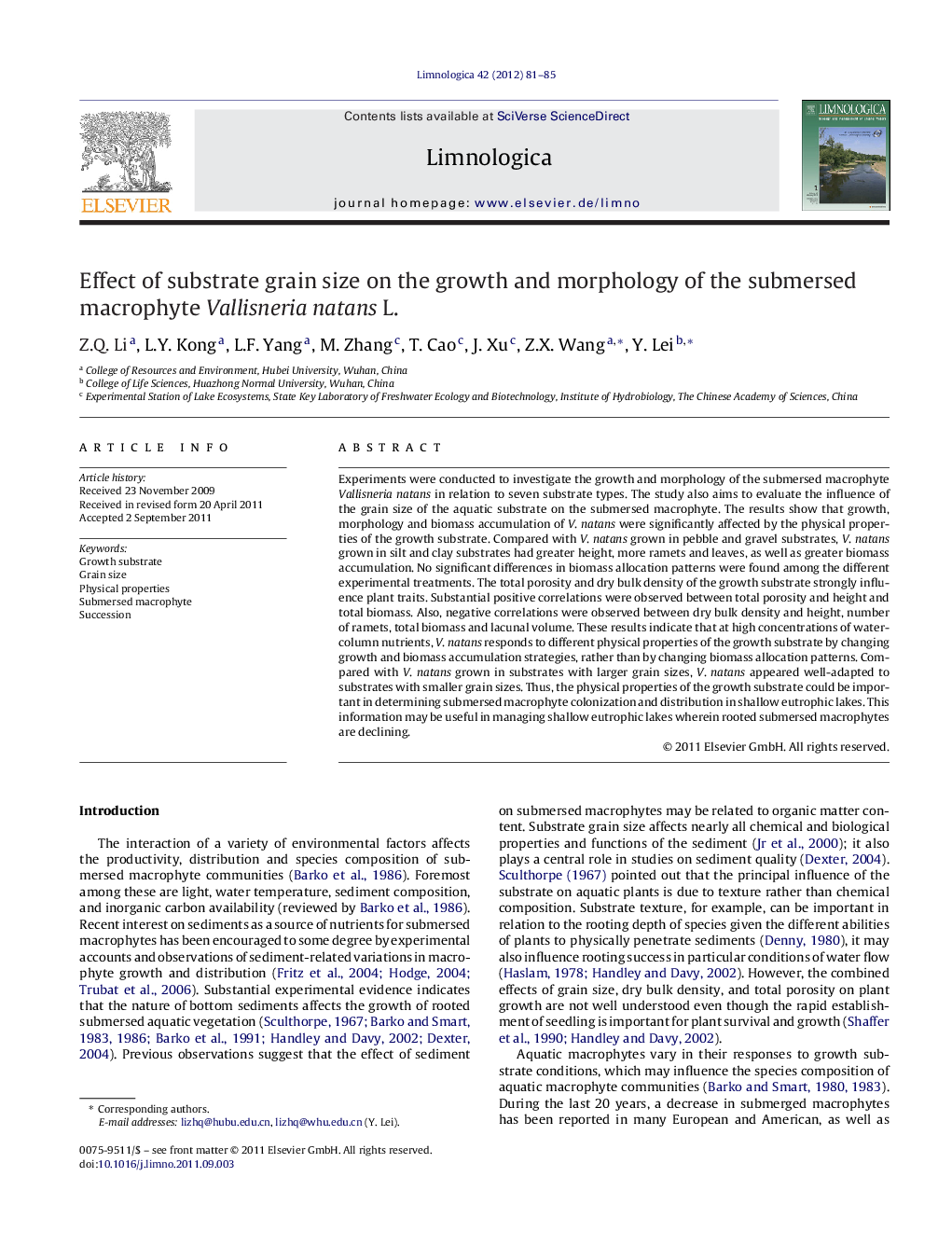| Article ID | Journal | Published Year | Pages | File Type |
|---|---|---|---|---|
| 4400521 | Limnologica - Ecology and Management of Inland Waters | 2012 | 5 Pages |
Abstract
Experiments were conducted to investigate the growth and morphology of the submersed macrophyte Vallisneria natans in relation to seven substrate types. The study also aims to evaluate the influence of the grain size of the aquatic substrate on the submersed macrophyte. The results show that growth, morphology and biomass accumulation of V. natans were significantly affected by the physical properties of the growth substrate. Compared with V. natans grown in pebble and gravel substrates, V. natans grown in silt and clay substrates had greater height, more ramets and leaves, as well as greater biomass accumulation. No significant differences in biomass allocation patterns were found among the different experimental treatments. The total porosity and dry bulk density of the growth substrate strongly influence plant traits. Substantial positive correlations were observed between total porosity and height and total biomass. Also, negative correlations were observed between dry bulk density and height, number of ramets, total biomass and lacunal volume. These results indicate that at high concentrations of water-column nutrients, V. natans responds to different physical properties of the growth substrate by changing growth and biomass accumulation strategies, rather than by changing biomass allocation patterns. Compared with V. natans grown in substrates with larger grain sizes, V. natans appeared well-adapted to substrates with smaller grain sizes. Thus, the physical properties of the growth substrate could be important in determining submersed macrophyte colonization and distribution in shallow eutrophic lakes. This information may be useful in managing shallow eutrophic lakes wherein rooted submersed macrophytes are declining.
Related Topics
Life Sciences
Agricultural and Biological Sciences
Aquatic Science
Authors
Z.Q. Li, L.Y. Kong, L.F. Yang, M. Zhang, T. Cao, J. Xu, Z.X. Wang, Y. Lei,
